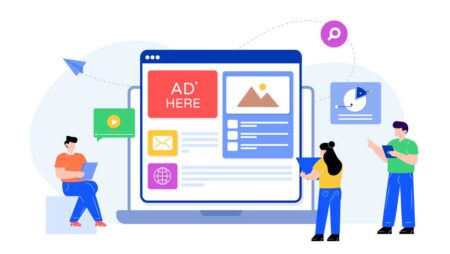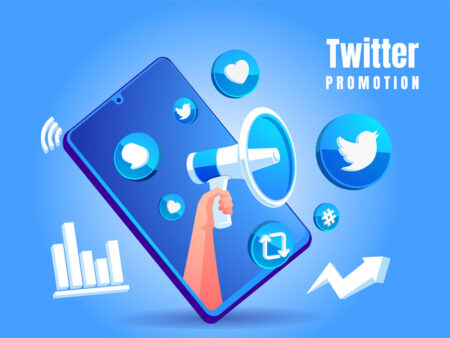For small businesses,traditional marketing can be expensive and difficult to maintain. Inbound marketing can level the playing field and give even the smallest business a chance to stand out and grow.
Being a marketer, I understand how challenging it is to attract visitors to your website, let alone convert them to leads.
There are lots of effective ways to market your website and drive traffic, but perhaps the most effective is a method that can both save you money and bring the leads to you without a ton of outreach: inbound marketing.
Most successful organizations understand and leverage the power of inbound marketing strategy. It not only helps you retain customers but also allows you to convert website visitors into quality leads without overshooting your marketing budget.
It’s sort of like the voice in Kevin Costner’s head: “If you build it, they will come.”
Inbound marketing is all about creating amazing content like e-books, articles, videos, and infographics that add value for your audience and give people a reason to visit your site again and again. This strengthens relationships and leads to continued business without you having to do a lot of advertising and outreach.
With the value being clear to many, there are still holdouts on the value of inbound marketing. If you fall within that category, I’m here to provide some clarity as to why you should strongly consider an inbound strategy.
Below are some advantages of inbound marketing to inspire you to incorporate it into your business strategy.
Why use inbound marketing?
Let’s dive into seven reasons to use inbound marketing for business growth.
1. It’s cost-effective.
There’s a lot of pressure on marketing professionals and business leaders to generate big results while keeping costs low. This is where inbound marketing adds the most value. According to research, creating and sharing high-quality content costs 60% less than other marketing approaches.
Instead of running paid ads or advertising on other platforms, smart marketers are using inbound marketing strategies to catch visitors’ eyes, build relationships and convert site visitors into leads.
If you don’t have the in-house expertise, there are various organizations and consultants that can help you deliver high-quality content at an affordable price.
If you run a small business, inbound marketing can help level the playing field between you and your larger competitors. You can attract visitors, generate leads and increase ROI through high-quality, engaging content with minimal marketing spend.
According to reports of inbound marketing statistics, inbound marketing tactics have shown to increase lead generation three times more per dollar than traditional methods. So, if you also want to increase your overall revenue at minimum cost, it’s the right time to use inbound marketing to generate more leads.
2. It helps build customers’ trust.
Gaining customers’ trust is the basis of every business, and one of the most challenging tasks for business owners and marketers.
If this challenge sounds familiar, inbound marketing is the perfect option for you. By sharing the right content with the right audience at the right time, you can easily build stronger relationships with your customers.
With high-quality content, you can easily resolve the queries of the people who visit your site. This builds their trust, and it also helps you gain valuable insights into the issues your customers are facing and determine ways your solutions can help.
You can also use this content to drive social engagement. The higher the engagement, the more leads roll in. So, if you want to build strong relationships with your customers, start promoting high-quality content on the right platforms.
3. It increases brand awareness and boosts your online presence.
Around 85% of consumers research products or services online before buying. If you have a great inbound strategy in place, a large chunk of those users could find your content first.
Great content can help you appear higher in search results – and the more visible your site is, the higher the engagement and the sales. The people who find your site via search are often more in tune with your offerings, as they were in the process of researching the type of thing you offer.
Inbound marketing offers your small business the ability to share the information with a wider audience and build their interest. You can boost your search presence, and your brand becomes more relevant and is more regularly in front of potential customers. What more can you ask from a marketing strategy?
So, if you also want to solidify your brand reputation and convert more leads, make the most of inbound marketing.
4. It can improve your marketing decisions.
By using an inbound marketing tool like HubSpot, you can easily analyze your business performance. You can gain insights into things like total number of clicks on a landing page or piece of content, conversions on a particular landing page or form, time spent on each page, what content is resonating (and what content is not) and much more.
Gathering and analyzing all these reports, you can realize in which aspects your implemented strategy needs refining. You can also score your leads and then set automations to send them great content at the right time. You can tell which messages resonate and gain clicks and which get overlooked completely.
This info can help you determine the hurdles in your marketing strategy. With this info in hand, you can determine the best direction to correct any issues and boost your success levels.
5. You can craft customer-focused content.
High-quality content is the foundation of your inbound marketing strategy. If you really want to engage visitors and build strong relationships with them, then it is necessary to share top-notch content that answers questions, offers value and fills gaps in the info customers seek.
With inbound marketing, this can be achieved if you focus on the interests of the audience and provide them with excellent content at the right time. By using an inbound marketing tool, you can create customer-centric content by looking at the types of content your customers like and what they don’t like.
You can then mimic what you did with the content that connected and create additional similar content to keep those relationships flowing. Fifty-three percent of marketers say that after implementing an inbound marketing strategy, they achieved better ROI.
6. Inbound marketing provides two-way communication.
Whether you post a blog, video or share an infographic, you can get instant feedback from your audience. Real-time information helps you understand the requirements of the audience.
Let’s say you post a video/blog on a social platform like Facebook, then your followers view the post and share their feedback through likes, comments and shares. Through inbound marketing, marketers can easily analyze what customers are actually looking for.
The key is to make sure you are engaged and keeping the conversation going. The more you engage, the more your customers will engage back. This will not only open up valuable info for you, but it also helps your content reach further.
If you show your customers that your brand actually cares for them and values their feedback, this can strengthen your bond with them even further. Moreover, it saves lots of time on both sides by allowing you to answer questions via your content rather than taking up the time of your customer support team.
7. It helps attract organic traffic to your site.
Inbound marketing also helps you in accelerating the process of generating traffic to your site. According to research conducted by HubSpot, organizations using inbound marketing strategies are successful in increasing their website visitors by 55%.
The more quality traffic you have on your site, the higher the chance to turn visitors into leads and then to customers.
By sharing blogs, videos, and other engaging content to the right audience, you can easily keep your audience members’ eyeballs on your website and inspire visitors to convert into not only customers but loyal promoters of your brand.
Whenever you create content, make sure it is engaging, crisp and informative. Many people prefer some elements of visual content within the content they consume these days. As such, you can make your content more engaging by adding videos, infographics, GIFs and other visual elements to your content to keep visitors flowing through the page. This increases the chances of people staying on your content and can increase website traffic and other important stats.
So, if you want to increase traffic to your website by spending less time and money, then there is no better method than an inbound marketing strategy.
Tools for inbound marketing
Fortunately, to make your life easier, there are tons of great tools to help you with your inbound marketing strategy.
Automation tools
HubSpot’s inbound marketing platform is one of the best. And they are masters of inbound, so not only can you use their tools to create great landing pages and other content to collect inbound leads, you can also look at the strategies HubSpot itself employs to get some inspiration.
With HubSpot, you can also more easily track the efforts of your inbound efforts and set lots of great automations to hit people with the content they need at the right time.
Active Campaign is another great option. It’s a bit more affordable than HubSpot, and it doesn’t quite have all the bells and whistles, but for a small to midsize business, it can be a great solution.
Social media management
Another great tool for inbound marketing is the social media management tool. There are lots of options on the market. HootSuite, Buffer, Sprout Social and others, just to name a few. Having a solid social media presence can seriously impact your inbound marketing efforts by making people aware of the content you’re posting and then giving them an easy way to connect back to your site.
Social media management tools also help by limiting the amount of time and effort needed to post on social. You can preschedule your posts and then focus more on the engagement piece.
SEO tools
Another important tool for inbound is the SEO tool. SEO should be a huge focus for your inbound strategy, as having optimized content can grab your site all kinds of traffic from search from people looking for exactly what you offer.
Some of the best tools on the market are SEMrush, Ahrefs and Moz. They each add a ton of value, so dig around and test them out to see which one you like best. While it could come down to the selection of tools available within each platform, you’ll also want to consider the user interface and figure out which is best for you.
Having these tools in place, from SEO to social media to automation, can really give a boost to your inbound strategy.
Take the next steps
Hopefully, the reasons mentioned above help you understand why inbound marketing could be so hugely valuable for your organization.
Just remember that publishing content alone is not enough to generate leads. Any content you create should be high quality and should be crafted with a clear objective and a clear need from your audience. Now that you understand its importance, don’t waste a single moment, and start creating content that helps you bring more leads.



